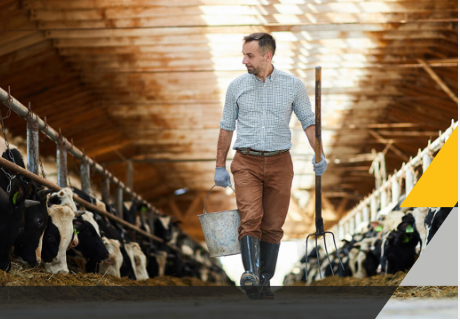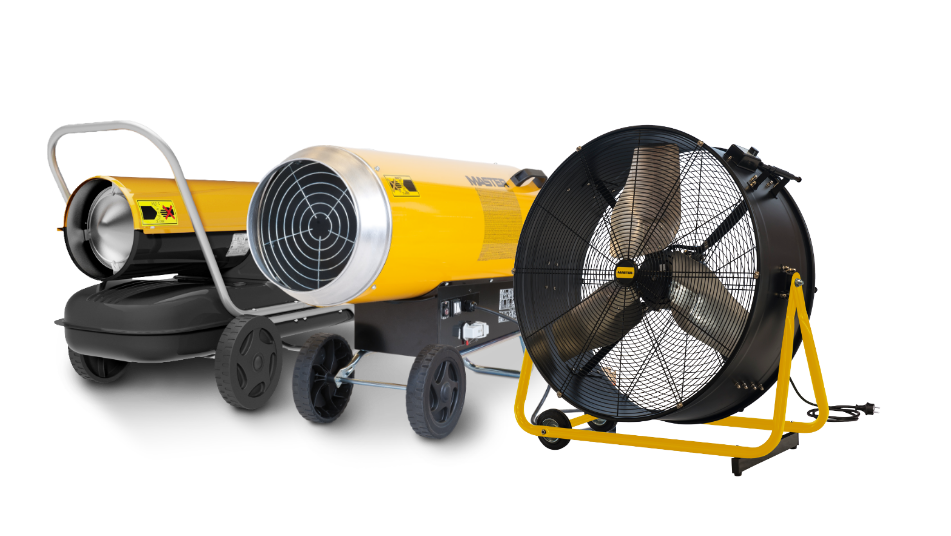Air heaters are useful in many areas of the agriculture sector. Quick installation, low running costs and high efficiency are but a few of the benefits that have made them the preferred type of equipment for heating storage and livestock buildings.
Air heaters are not just handy for increasing the temperature in farming buildings, they can also be used for drying vegetables, saddle blankets and more. Because the farming industry is highly affected by and sensitive to seasonal changes, heating will be required only for a short period of time. This makes portable air heaters an ideal solution.
Not just any air heater
But it is not just a matter of finding a portable heater. Depending on where it is applied, it will have to meet certain requirements, or it will break or just not do the job right. For instance, air heaters in livestock and crop storage buildings usually attract a large amount of dirt and dust. They are also exposed to toxic gases, including ammonia (mainly in livestock buildings). And farmers use much more cleaning agents and disinfectants in these areas. All of these are factors that negatively impact the performance and lifetime of the air heater. They are also the reason why it is crucial to select units made of highly durable components and to use high-quality consumables such as air and fuel filters.
Master Climate Solutions offers an assortment of devices running on oil or gas (LPG and natural gas) used successfully by the farming industry across Europe for years. These include oil fired heaters, with or without exhaust system, and gas heaters.
The following briefly describes how heaters may help in different areas of farming, i.e. grain drying, poultry and pig farming as well as storage of agricultural products.
Grain drying
For decades, farmers have relied on the same technology for drying cereal grains using air heaters. The moisture level of grains for sale should not exceed 15%. However, when freshly harvested, the moisture level is around 30%. Therefore, drying is required.
We have been involved in this type of projects where a farmer who grows crops and then gathers the harvest in several barns that have been specially adapted for this purpose by installing hot air ducts and floor ducts to distribute the hot air.
The BV 290 indirect heaters are then placed outside the building. They blow hot air onto the huge fan, which blows it through the duct between the rooms where the cereal grains are being dried. The temperature in this duct is typically 30-35°C. From there, the hot air is distributed into the narrow floor ducts. The time required to reach the wanted moisture level is influenced by many factors, but we have seen examples for two normal sized barns where two 81kW fan heaters were able to reach that level within a week. In that particular case, the heaters were able to dry approximately 160gallons/24 hours.
Poultry and pig farming
Farmers across the globe are well aware of the importance of changing conditions under which farm animals need to be raised, and the fact that these cannot always be obtained without the assistance of certain equipment and knowhow. The conditions significantly influence the health, diet, growth and ultimately also the quality of the finished produce, so getting them right is good for animals and businesses alike. An important part of that process is to ensure good ventilation and proper temperature control measures.
For pig farming, maintaining optimal climatic conditions at all times is indispensable for producing high-quality meat while minimising costs. Depending on life stage, pigs require very different temperatures to thrive. In pens for new-born piglets, the optimal temperature needs to be relatively high during the first few days. But as the piglet gains weight, the temperature can be reduced. The exact temperatures required depend both on size and age of the piglet and on the flooring type (straw, concrete, perforated metal, slatted or other). Moreover, fully grown pigs typically thrive in temperatures that are slightly higher than for pregnant sows.
Poultry farming also has specific requirements with regards to temperature. For the first five days after hatching, chicks should be kept at a temperature of 35°C. Subsequently, the temperature can be lowered to around 22°C. It is important to keep in mind that chicks are extremely sensitive to changing conditions – rapid temperature fluctuations can cause significant losses and weaken the animals. In poultry farming, different models of air heaters are used, depending on the scale of husbandry and area of the henhouse. These can be either indirect heaters, direct heaters that are portable, or stationary gas heaters.
Storage of agricultural products
Many agricultural products also need to be stored at certain temperatures to keep them from going bad. Under autumn and winter conditions in cold areas the harvest may freeze and be spoiled if kept in an unheated building. During those months, portable air heaters can help farmers increase the temperature without having to install a complex and expensive heating system.
In a recent user case, a big farm needed a temporary heating installation for its potato and onion storehouse. Here, the crops go through the so-called curing phase, during which keeping the right temperature and moisture levels is essential to the quality of the final product. For that purpose, a variety of appliances have been installed in the storage room, including fans and heaters. The optimum temperature range is from 15 to 16°C. In the discussed case, two systems were installed, utilising portable gas heaters that can also be fitted with an optional room thermostat to regulate inside temperatures automatically. The units were evenly arranged, while the flow of hot air was oriented toward the fans, which – subsequently – directed the air flow at the stored vegetables.
To learn more about how our portable air heaters can help you control the air temperature in your farming installations, speak to our team today.


